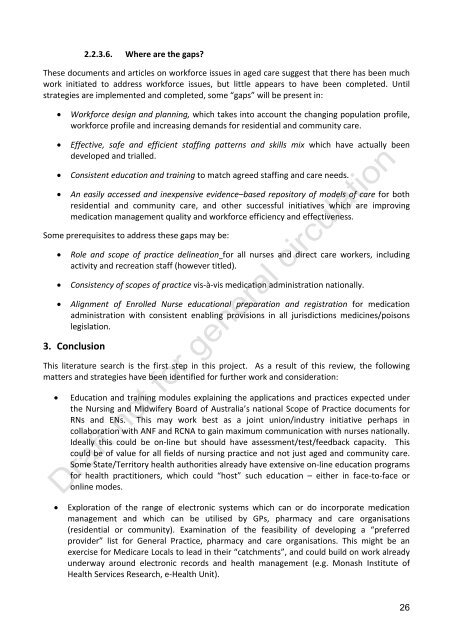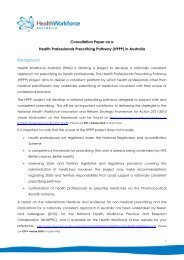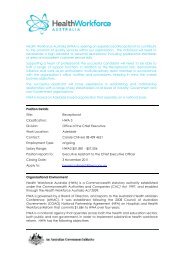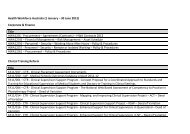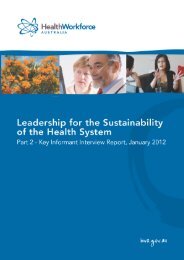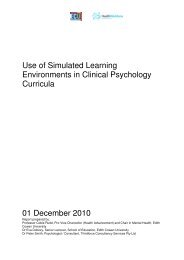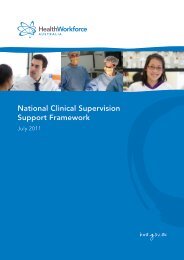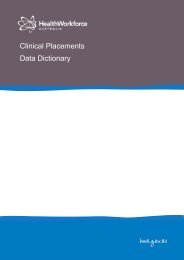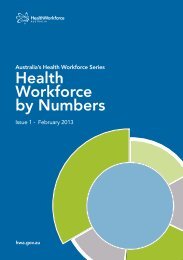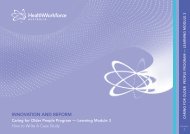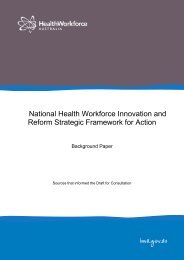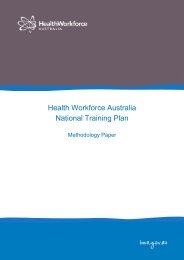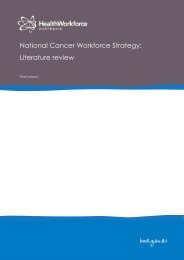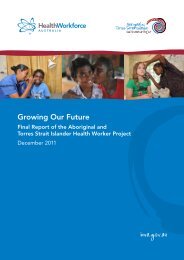SUMMARY - Safe Medications Management project: Key issues and ...
SUMMARY - Safe Medications Management project: Key issues and ...
SUMMARY - Safe Medications Management project: Key issues and ...
Create successful ePaper yourself
Turn your PDF publications into a flip-book with our unique Google optimized e-Paper software.
2.2.3.6. Where are the gaps?These documents <strong>and</strong> articles on workforce <strong>issues</strong> in aged care suggest that there has been muchwork initiated to address workforce <strong>issues</strong>, but little appears to have been completed. Untilstrategies are implemented <strong>and</strong> completed, some “gaps” will be present in:Workforce design <strong>and</strong> planning, which takes into account the changing population profile,workforce profile <strong>and</strong> increasing dem<strong>and</strong>s for residential <strong>and</strong> community care.Effective, safe <strong>and</strong> efficient staffing patterns <strong>and</strong> skills mix which have actually beendeveloped <strong>and</strong> trialled.Consistent education <strong>and</strong> training to match agreed staffing <strong>and</strong> care needs.An easily accessed <strong>and</strong> inexpensive evidence–based repository of models of care for bothresidential <strong>and</strong> community care, <strong>and</strong> other successful initiatives which are improvingmedication management quality <strong>and</strong> workforce efficiency <strong>and</strong> effectiveness.Some prerequisites to address these gaps may be:Role <strong>and</strong> scope of practice delineation for all nurses <strong>and</strong> direct care workers, includingactivity <strong>and</strong> recreation staff (however titled).Consistency of scopes of practice vis-à-vis medication administration nationally.Alignment of Enrolled Nurse educational preparation <strong>and</strong> registration for medicationadministration with consistent enabling provisions in all jurisdictions medicines/poisonslegislation.3. ConclusionThis literature search is the first step in this <strong>project</strong>. As a result of this review, the followingmatters <strong>and</strong> strategies have been identified for further work <strong>and</strong> consideration:Education <strong>and</strong> training modules explaining the applications <strong>and</strong> practices expected underthe Nursing <strong>and</strong> Midwifery Board of Australia’s national Scope of Practice documents forRNs <strong>and</strong> ENs. This may work best as a joint union/industry initiative perhaps incollaboration with ANF <strong>and</strong> RCNA to gain maximum communication with nurses nationally.Ideally this could be on-line but should have assessment/test/feedback capacity. Thiscould be of value for all fields of nursing practice <strong>and</strong> not just aged <strong>and</strong> community care.Some State/Territory health authorities already have extensive on-line education programsfor health practitioners, which could “host” such education – either in face-to-face oronline modes.Exploration of the range of electronic systems which can or do incorporate medicationmanagement <strong>and</strong> which can be utilised by GPs, pharmacy <strong>and</strong> care organisations(residential or community). Examination of the feasibility of developing a “preferredprovider” list for General Practice, pharmacy <strong>and</strong> care organisations. This might be anexercise for Medicare Locals to lead in their “catchments”, <strong>and</strong> could build on work alreadyunderway around electronic records <strong>and</strong> health management (e.g. Monash Institute ofHealth Services Research, e-Health Unit).26


